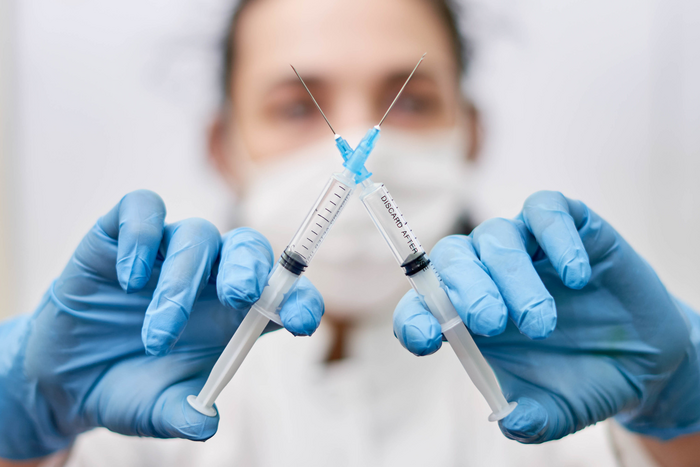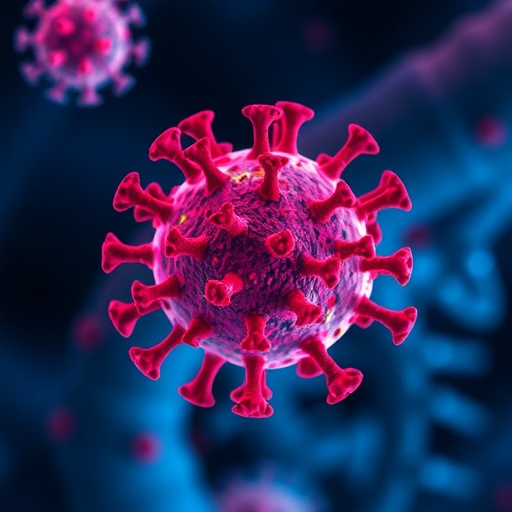New MIT research forecasts the effect of various two-dose vaccine allocation strategies on the cumulative number of infections and deaths in the U.S.—quantifying the impact of prioritizing first versus second doses. The forecasts suggest that allocating more than 50% of available doses to individuals who have not received their first dose can significantly increase the number of lives saved and significantly reduce the number of COVID-19 infections.
With more than 44.7 million infections in the U.S. and 219 million worldwide—and a death toll over 721,000 in the U.S. and 4.55 million worldwide—the COVID-19 pandemic profoundly altered the research agenda of the scientific community. Mass vaccination is now seen as the critical pathway to alleviate the impact of the disease; however, producing and distributing the vaccines has become a substantial challenge for manufacturers. With the emergence of COVID-19 variants—and now with the monkeypox virus recently declared a public health emergency in the U.S.—determining how to effectively allocate vaccines is more critical than ever.
The researchers—Zied Ben Chaouch, PhD candidate, MIT Department of Electrical Engineering and Computer Science; Andrew W. Lo, the Charles E. and Susan T. Harris Professor of Finance at MIT Sloan School of Management; and Chi Heem Wong, research affiliate, MIT Laboratory for Financial Engineering—created a simple epidemiological model that simulates the supply of vaccines and explores how different allocation policies of two-dose vaccines can affect numbers of infections and deaths.
“Two-dose vaccines can be difficult to quickly produce and deliver,” says Ben Chaouch. “This model was applied to the U.S., but it can also be used globally, especially for countries with ongoing supply chain issues.”
The model simulates the supply of vaccine under random shocks, allowing the researchers to gauge the performance of various vaccination policies based on the number of cumulative deaths and cumulative infections. The results shed light on whether it is best to store vaccine doses in order to guarantee a second dose to all individuals who received a first dose, or if it is more efficient to allocate as many first doses as possible.
Storing doses ensures that individuals who received a first dose will be able to obtain their second dose according to the recommended vaccination schedule, even if supply shocks occur. However, this strategy reduces the number of individuals who can be vaccinated each day, and may lead to a higher cumulative number of deaths and infections. (The model assumes that 1% of unused doses are lost each day to reflect spoilage and/or wastage due to unforeseen circumstances.)
The forecasts suggest that, under some mild assumptions, allocating more than 50% of available doses to individuals who have not received their first dose can significantly increase the number of lives saved and significantly reduce the number of COVID-19 infections. The research finds that 50% allocation saves on average 33% more lives, and prevents on average 32% more infections relative to a policy that guarantees a second dose to all first-dose recipients. In fact, in the presence of supply shocks, the incremental benefit of the new policy is 2,184 additional lives saved and 146,357 infections prevented.
While the model was created specifically with COVID-19 in mind, it is intended to be used for addressing other public health crises as well.
“This model provides a practical framework for how to deal with future pandemics,” says Wong.

Credit: Marco Verch aka Wuestenigel: https://linktr.ee/wuestenigel
New MIT research forecasts the effect of various two-dose vaccine allocation strategies on the cumulative number of infections and deaths in the U.S.—quantifying the impact of prioritizing first versus second doses. The forecasts suggest that allocating more than 50% of available doses to individuals who have not received their first dose can significantly increase the number of lives saved and significantly reduce the number of COVID-19 infections.
With more than 44.7 million infections in the U.S. and 219 million worldwide—and a death toll over 721,000 in the U.S. and 4.55 million worldwide—the COVID-19 pandemic profoundly altered the research agenda of the scientific community. Mass vaccination is now seen as the critical pathway to alleviate the impact of the disease; however, producing and distributing the vaccines has become a substantial challenge for manufacturers. With the emergence of COVID-19 variants—and now with the monkeypox virus recently declared a public health emergency in the U.S.—determining how to effectively allocate vaccines is more critical than ever.
The researchers—Zied Ben Chaouch, PhD candidate, MIT Department of Electrical Engineering and Computer Science; Andrew W. Lo, the Charles E. and Susan T. Harris Professor of Finance at MIT Sloan School of Management; and Chi Heem Wong, research affiliate, MIT Laboratory for Financial Engineering—created a simple epidemiological model that simulates the supply of vaccines and explores how different allocation policies of two-dose vaccines can affect numbers of infections and deaths.
“Two-dose vaccines can be difficult to quickly produce and deliver,” says Ben Chaouch. “This model was applied to the U.S., but it can also be used globally, especially for countries with ongoing supply chain issues.”
The model simulates the supply of vaccine under random shocks, allowing the researchers to gauge the performance of various vaccination policies based on the number of cumulative deaths and cumulative infections. The results shed light on whether it is best to store vaccine doses in order to guarantee a second dose to all individuals who received a first dose, or if it is more efficient to allocate as many first doses as possible.
Storing doses ensures that individuals who received a first dose will be able to obtain their second dose according to the recommended vaccination schedule, even if supply shocks occur. However, this strategy reduces the number of individuals who can be vaccinated each day, and may lead to a higher cumulative number of deaths and infections. (The model assumes that 1% of unused doses are lost each day to reflect spoilage and/or wastage due to unforeseen circumstances.)
The forecasts suggest that, under some mild assumptions, allocating more than 50% of available doses to individuals who have not received their first dose can significantly increase the number of lives saved and significantly reduce the number of COVID-19 infections. The research finds that 50% allocation saves on average 33% more lives, and prevents on average 32% more infections relative to a policy that guarantees a second dose to all first-dose recipients. In fact, in the presence of supply shocks, the incremental benefit of the new policy is 2,184 additional lives saved and 146,357 infections prevented.
While the model was created specifically with COVID-19 in mind, it is intended to be used for addressing other public health crises as well.
“This model provides a practical framework for how to deal with future pandemics,” says Wong.
“We recognize that each situation offers its own unique challenges,” added Lo. “The purpose of this tool is to let policymakers get answers to the most relevant questions in the early phases of a pandemic in order to make tough decisions before the point of no return.”
Journal
PLOS Global Public Health
DOI
10.1371/journal.pgph.0000498
Method of Research
Experimental study
Subject of Research
People
Article Title
Should we allocate more COVID-19 vaccine doses to non-vaccinated individuals?
Article Publication Date
1-Jul-2022




